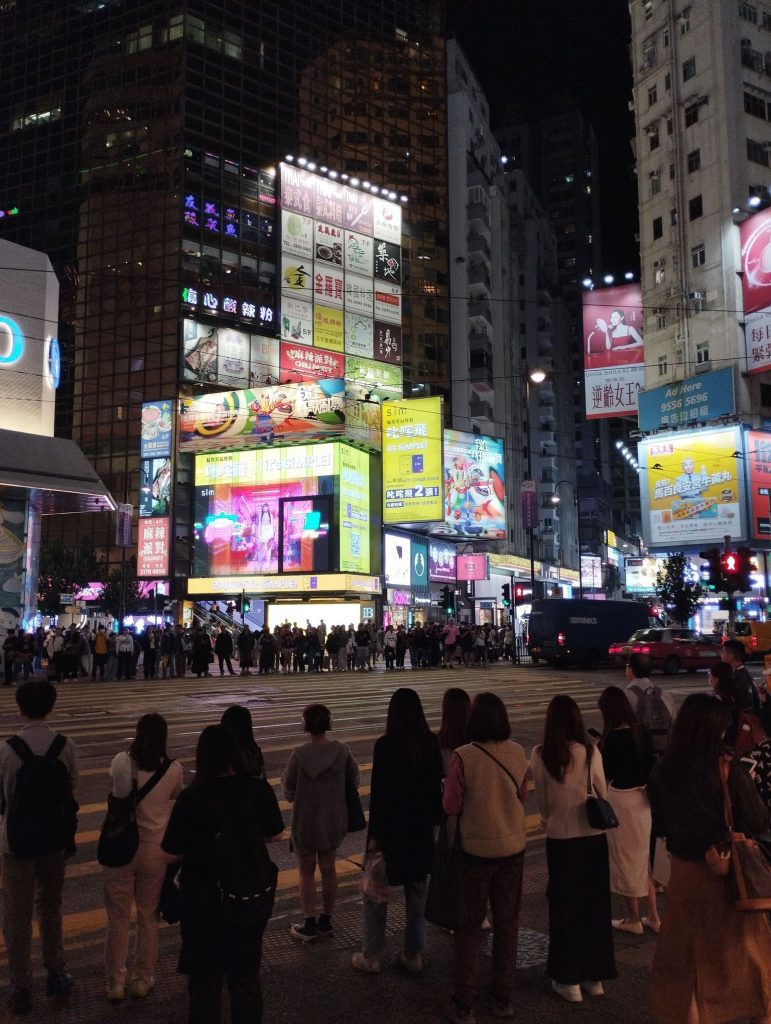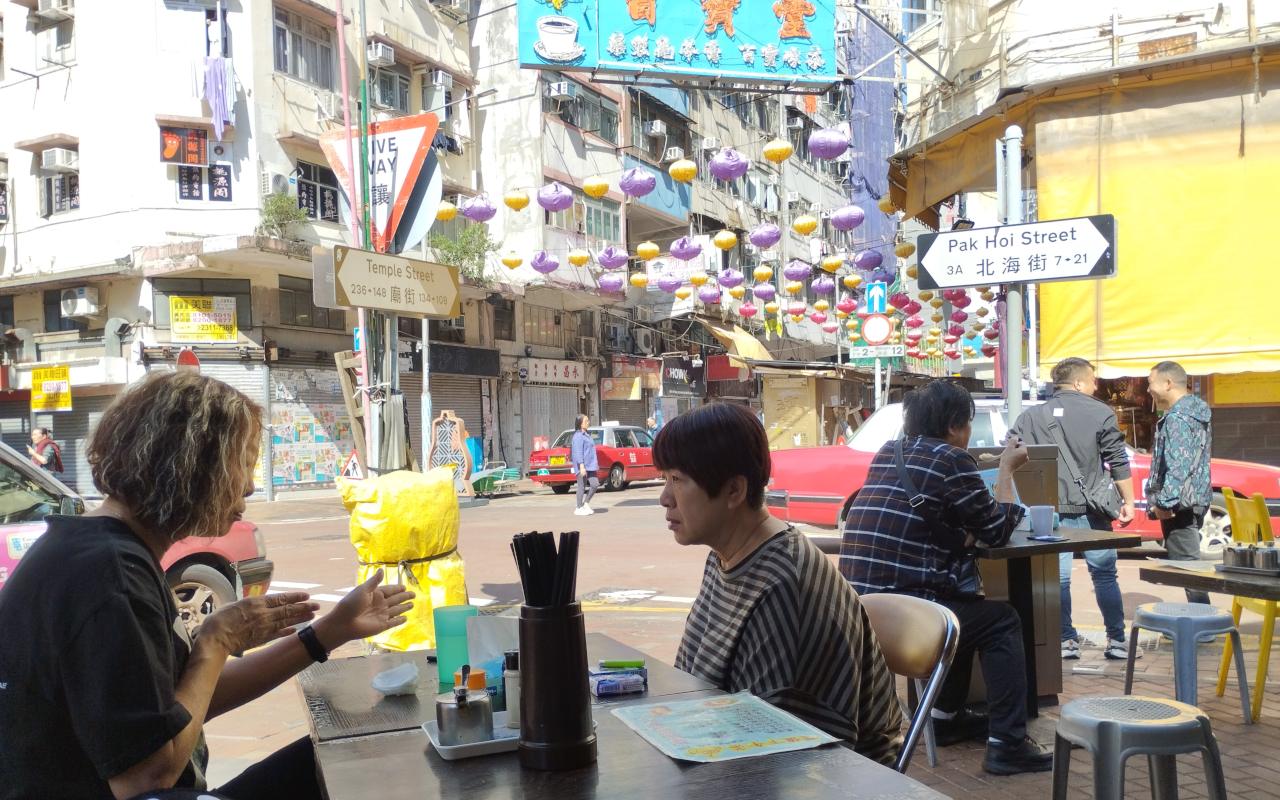Interesting, diverse, and compact, the Special Administrative Region of Hong Kong combines the best of a modern city with an ancient culture nourished by centuries of Western influence. In the People’s Republic of China, but without being Chinese, this country consists of Kowloon, Hong Kong Island, and the New Territories, over 104,000 km2 full of discoveries and curiosities.
And it is as big as it is peculiar, so it is not surprising that many things caught my attention during my time there. From the traditions of its people to the way they organize their daily work, Hong Kong is unique. In my opinion, some of these things are positive, others less so, but all of them leave evidence of the cultural diversity that exists between countries and that we should not stop longing for. Here is my list:
Content index
1. Bamboo scaffolding
At first, I thought it would be something isolated, but nothing could be further from the truth. No matter how big the project or how tall the building, in Hong Kong, scaffolding is made of bamboo. We only saw a few with a metal base; the rest were a perfectly framed framework of bamboo branches, more flexible and cheaper than the metal rods.
They are sticks placed horizontally (called gen) and vertically (called sham) and connected with nylon straps. That’s it, that’s all you need, and it’s impressive from the first minute you set foot in Hong Kong, but especially when you see tall skyscrapers covered with bamboo scaffolding that seems to defy gravity. It is impossible not to take dozens of pictures.
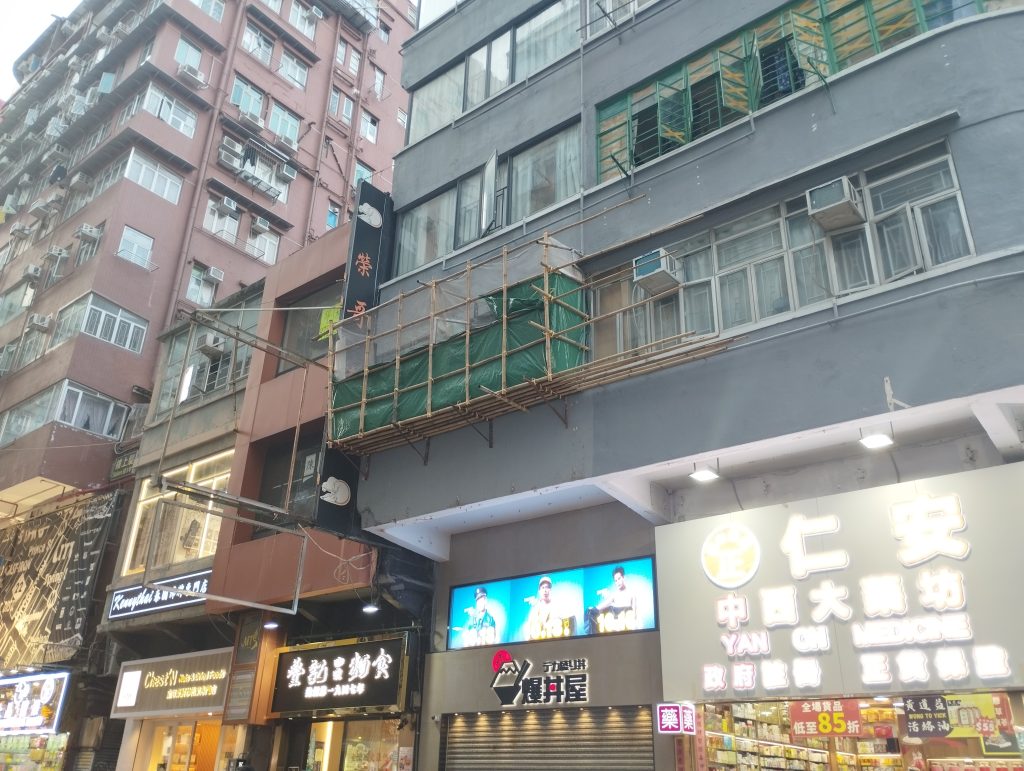
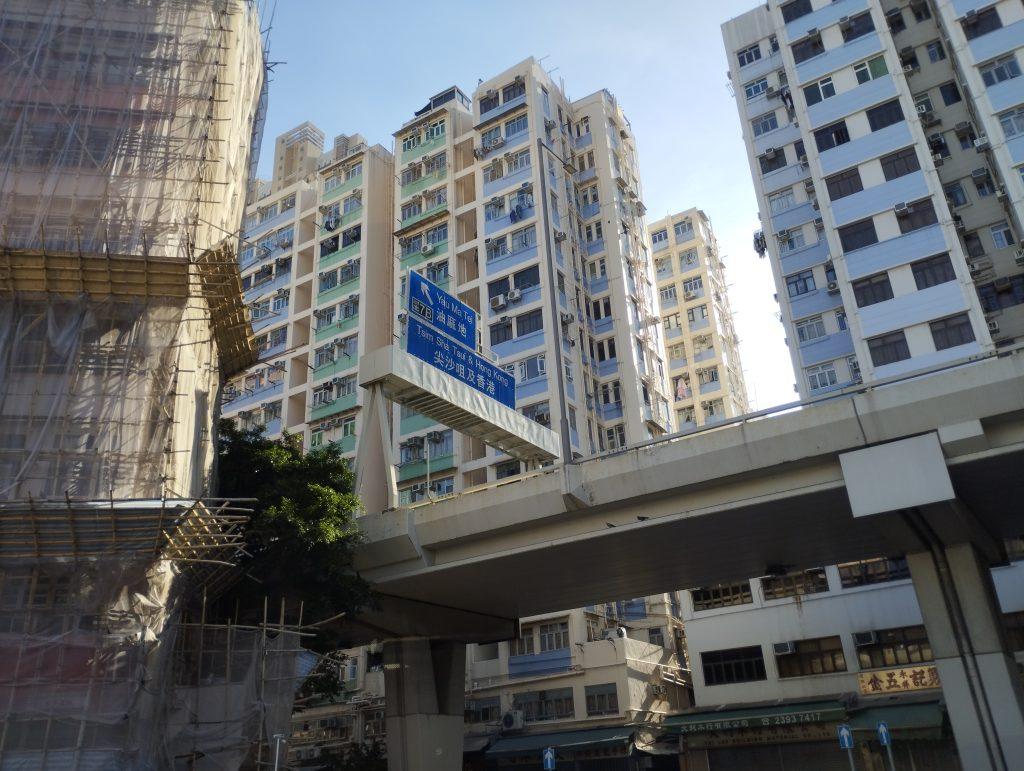

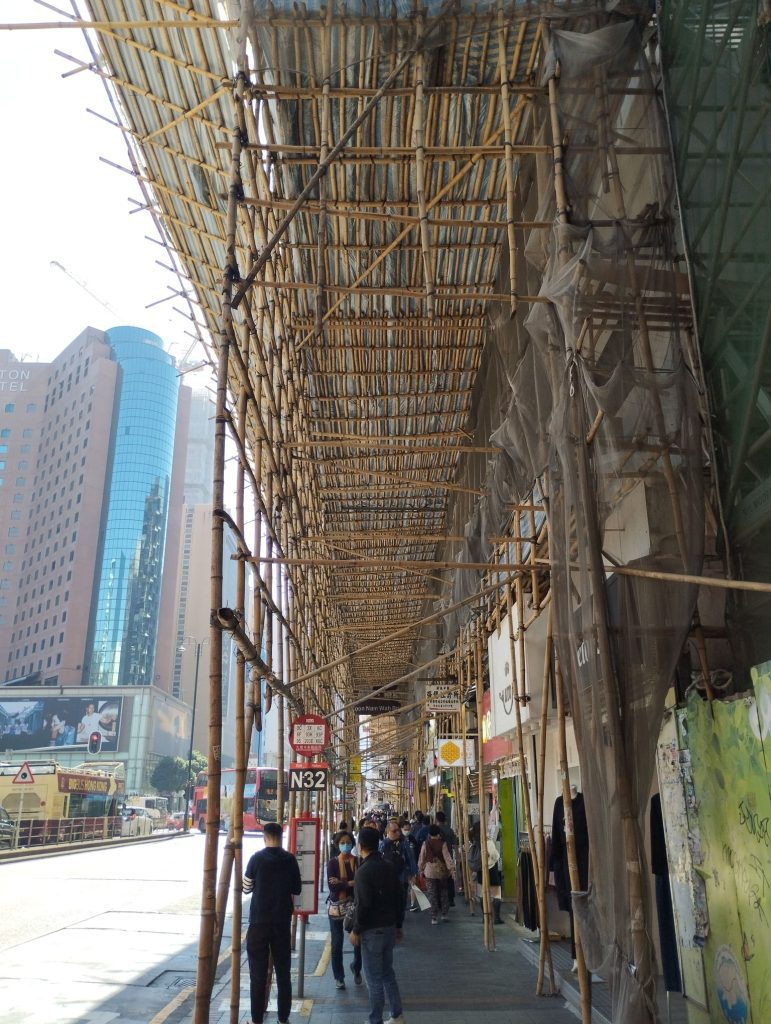
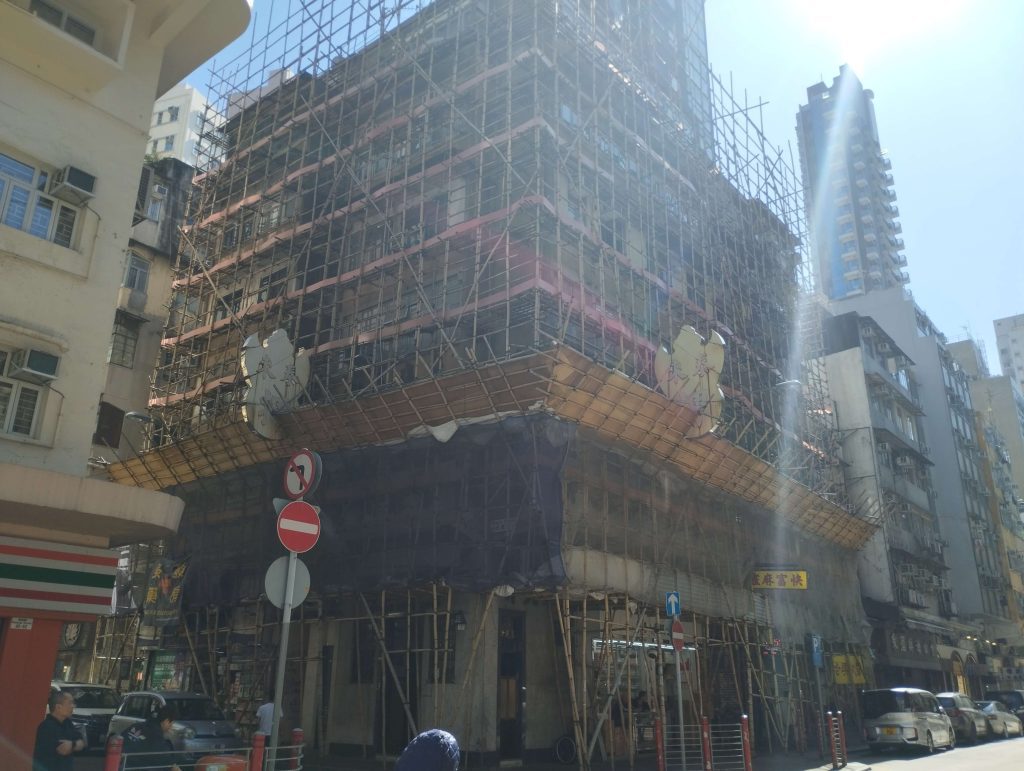
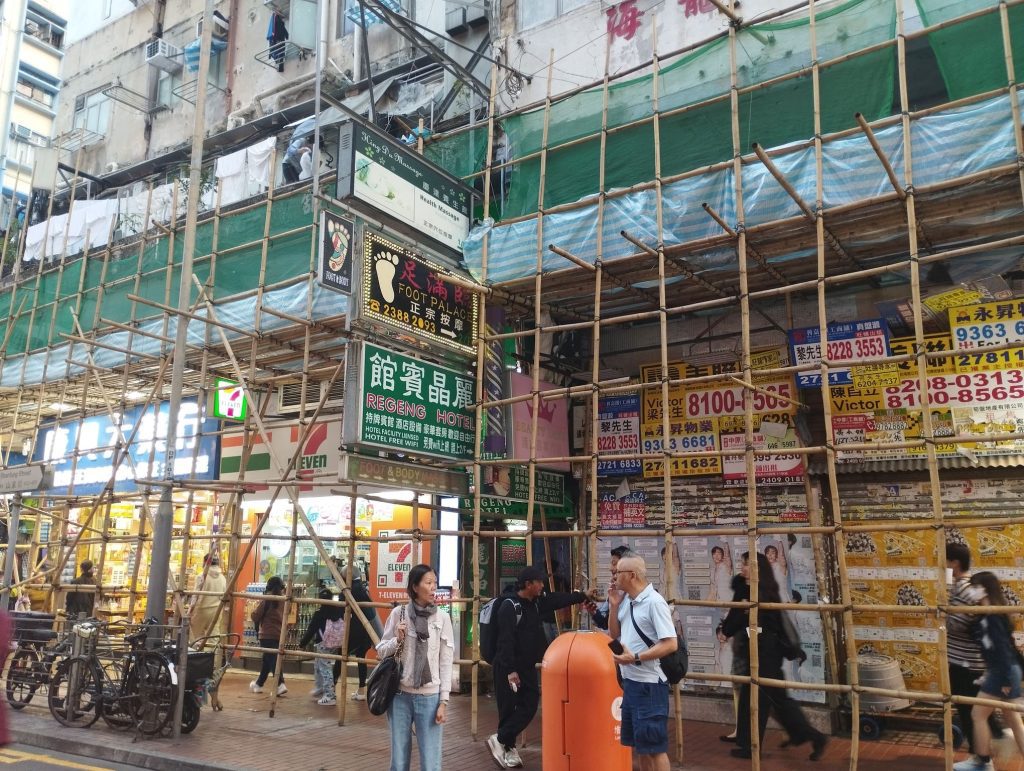
2. What could be considered as ‘bad manners’
It is not surprising that in some Asian countries, citizens, because of their culture, make noise, are direct in their treatment, erupt, and spit in public places… After a few days in Hong Kong, you just get used to this fact, but you have to be forewarned and always be aware that, on a cultural level -at least from my European perspective – the behavior will be very different. You’ll see when you’re on the subway, when you’re eating in a restaurant, and especially when you’re walking down the street.
To give you an example, when I was eating at a dai pai dong in Central, which specializes in seafood, a girl was eating fish and spitting the bones directly from her mouth onto the table without using her hands or chopsticks… To me, that would be considered rude, but to her, it would probably be weird to put her fingers in her mouth to remove those bones…
Cultural differences: the reason we travel and what makes each place and society a treasure…
3. Public toilets
After my trip to Hong Kong, I went back to Spain, and I could not help but compare the situation of the toilets: Spain: 0 – Hong Kong: 1.
Although it may surprise you – especially if you have travelled to other Asian countries – I can assure you that the public toilets in Hong Kong are wonderful, always clean, with toilet paper, comfortable, accessible… I was already pleasantly surprised in South Korea, but Hong Kong exceeded all of my expectations in this regard.
Even in Victoria Peak, the women’s toilets had a seat for babies. Micromachism aside (my partner didn’t see any baby seats in the men’s toilets), this seems like progress to me, and just as I noticed on my last trips to Porto that there was no bathroom without a baby changing area, here it’s striking how well taken care of everything is, and the point of going the extra mile for the sake of comfort.

4. The prices
Although at first I thought that Hong Kong would be a costly city, in the purest developed city style, I soon found out that it is not. It can be an expensive city if you want it to be, but it doesn’t have to be. Transportation is cheap, you can eat in tan taan chengs from $5, there are recurring discounts in bars and local supermarkets, there is happy hour in pubs… In addition, many of the things to see and do in Hong Kong are free or heavily discounted.
However, the most curious thing is the contrast: while things that I expected to be expensive were unexpectedly affordable, others, like the ferry that connects Hong Kong to Macau, have a price that, in my opinion, is completely out of line with the rest. No more and no less than around $50 per person return. Macau is one of the places to visit in one day from Hong Kong, so if you take into account the time you spend in the city, the price is quite high.
5. The housing problem
This problem is well known to everyone, but it is not until you get there that you understand its magnitude. To delve deeper into this issue and not just go through Hong Kong as mere tourists, we joined a tour organized by a local company in cooperation with the local NGO SoCO, which tries to show visitors the reality of housing in the city.
From micro-housing in cage houses – as you read it, houses that are cages – to illegal housing made of plywood on the roofs of Hong Kong’s buildings, it is worth knowing, from a local perspective, the problems Hong Kong society faces in terms of housing.
I leave you some pictures as a sample, but I recommend that you save some time to do this tour, which goes beyond the tourist tours.
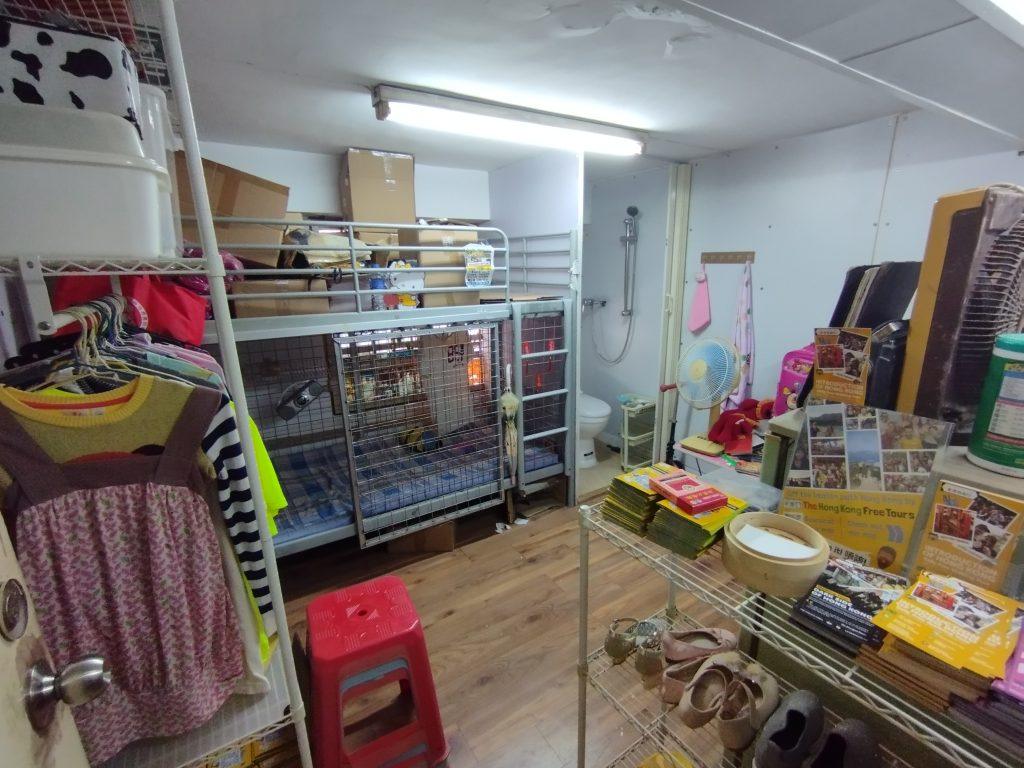
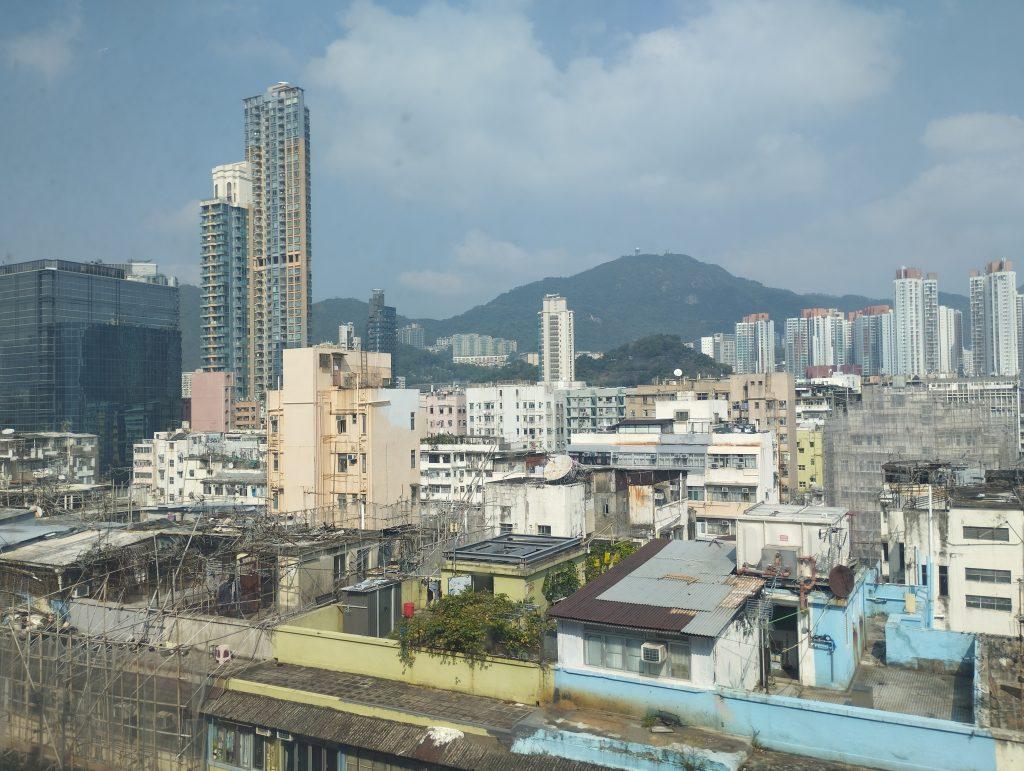
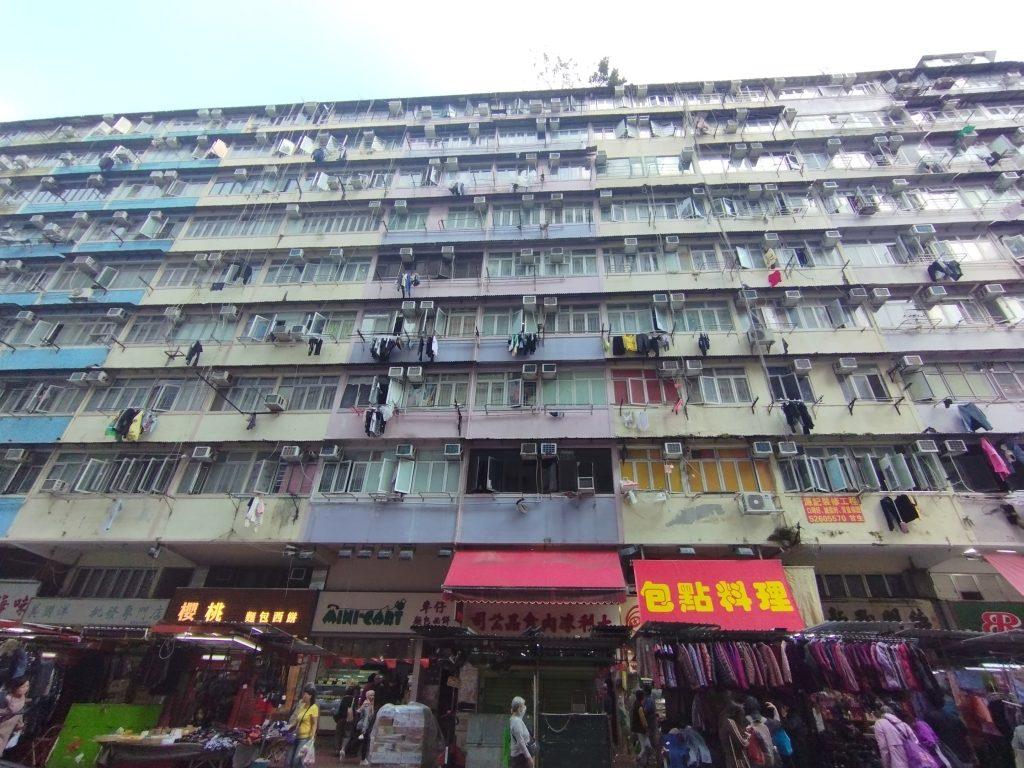
6. Air conditioning always on full blast
My first contact with the issue of air conditioning in Hong Kong was before I arrived in the city; actually months before: when I booked our hotel – The Salvation Army – Booth Lodge, which I loved! – I was sent a message informing me that it was the hotel’s policy not to turn off the air conditioning AT ANY TIME.
Just so you understand this point, which for me is one of the craziest things about Hong Kong, full-blast air conditioning can become a problem in public places, transportation, and even in your accommodation. In my case, it was not; after all, it was not that strong, nor was it necessary to have it on 24 hours a day; we turned it off at night and nothing happened (we also traveled in the less humid season; when the humidity exceeds 90%, I guess that is a different story), but we did suffer it in buses, ferries, shops and elevators, so I always recommend, when preparing for your trip to Hong Kong, not to miss layers of clothing to avoid colds.
7. The women who meet on Sundays
I arrived in Hong Kong on a Sunday, and the first thing I did was to leave my things at the hotel and go out to explore the area. Since my accommodation was in Yau Ma Tai, I walked around the surrounding area, including Mong Kok. At one of the pedestrian bridges, I heard a lot of bustle and saw a lot of young muslim women, and right in one corner, I saw a market with Malay products, so I assumed it was an area with a predominantly Malay or Indonesian population.
There was music, food, and lots of women – all women – in groups on both sides of the bridge… As I tell you, I thought it was some kind of celebration and did not think any more about it until the following Sunday, when I was walking through the Nan Lian park and saw a similar panorama again.
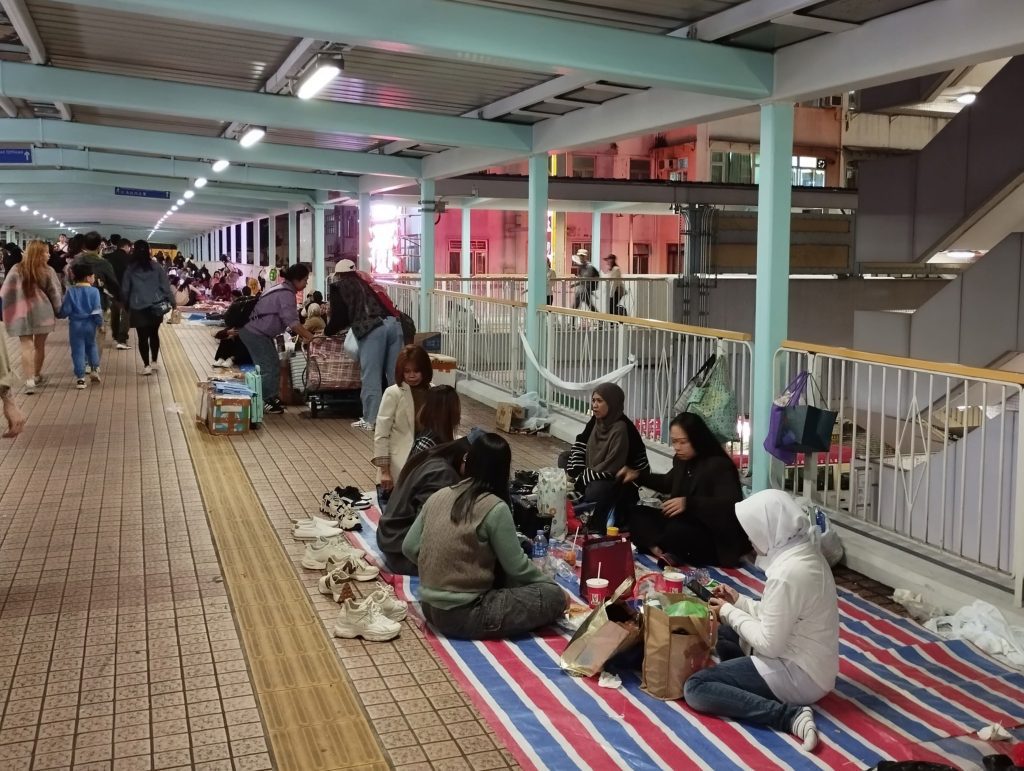
I then did some research and found out that women from Southeast Asia who come to Hong Kong in search of work usually live as boarders with local families, taking care of the house and children, and their only day off is Sunday. So they take the opportunity to get together, meet friends, and go out to enjoy the day.
Although it’s very interesting to see, and it might seem like a celebration, I think it’s important to read the situation critically: young women with only one day off, living in someone else’s house and earning a ridiculous salary, who are not allowed to spend Sunday at home or invite their friends over, and have to look for options outside…
*If you search the Internet (blessed Reddit, always with answers to these doubts), you will find much more information about the topic.
8. What I think is a lack of bars
The topic of bars, as a Spaniard, is usually of interest in my travels, and the fact is that, especially when I travel, I like to find places to end the day, rest after walking non-stop, or go out to join a party in other countries. In the case of Hong Kong, I was quite struck by the lack of bars, or at least my idea of a bar.
If something is clear, it is that the area to go to for a drink is Lan Kwai Fong in Central, although it is also where, at times, I heard nothing but English. We were also recommended the Wan Chai area, Tsim Sha Tsui, and the university district. In other areas, such as Kowloon, we saw Irish and English pubs, darts and pool bars, and lots of craft breweries.
Are there bars? Yes. Is there a bar culture? I haven’t seen it out of these areas. I know that the university areas or those where there are expats tend to have more of an atmosphere, but in general it seems that a mix of factors – the high price of drinks in bars, the need to save money due to the housing problem, most expats who used to go out left HK during COVID – has made Hong Kong’s nightlife quite lacking…
My trip to Hong Kong was in December and I was in South Korea in February, light years apart in terms of bar culture and alcohol…
9. Set meals at cha chaan tengs
One of the things that makes eating in Hong Kong such a bargain is the set menu. This is not common everywhere; I’ve seen it mostly in teahouses and some local restaurants, but when you see it, you should take advantage of it!
It seemed to me to be something that was designed to suit the pace of life of Hong Kongers, and so in the cha chaan tengs they have breakfast menu, lunch menu, afternoon tea, dinner menu, and other pre-designed menus at a fixed price that vary depending on the time of day, always with food and drink included.
| Set | Time | Price approx. |
|---|---|---|
| Breakfast set | 7:00 – 11:30 | About HK$40-50 |
| Lunch set | 11:30 onwards | From HK$50 |
| Dessert set | 12:00 pm onwards | About HK$20 |
| Afternoon tea | 2:00 am – 6:00 pm | Between HK$40-50 |
| Dinner set | 6:00 pm – 11:00 pm | From HK$75 |
| Always available set | 24 hours | From HK$50 |
10. The lack of priority for ambulances
The first and, I hope, the last time in my life I see something like this… In Hong Kong, it doesn’t make a difference if an ambulance is trying to pass through the streets with its siren blaring; neither vehicles nor pedestrians will stop their activities to let it pass. I even saw the ambulance driver thank a bus driver for slowing down. This goes hand in hand with what I said earlier about cultural or protocol differences that go beyond different ways of eating or behaving.
In Hong Kong, people are in a hurry, and there are no rules about priority, yielding, etc Just as no one will hold the door for you or worry about crossing your path when you’re walking, they won’t let the ambulance pass. Unbelievable, right? You have to see it to believe it. This is, without a doubt, one of the most negative things I have seen on my trip to Hong Kong.
11. The custom of cleaning utensils with tea or hot water before eating
This ritual, which originated in the street dai pai dongs, has also moved into tea houses, and it is very easy to make the mistake of believing that they are giving you water to drink, trying it, and seeing that it is hot and that something is wrong. Yes, this has happened to me. And yes, it has happened to many other travelers. This water is hot because it is used to clean the utensils that will be used to eat (bowls, chopsticks, spoons, glasses…).
It is a tradition that, as I said, originated in the dai pai dongs to ensure the safety of eating in those stalls (there was always someone to clean the dishes, but this measure guaranteed an extra layer of hygiene), and is now common in many other places. Whether it’s hot water or tea, you won’t see anyone sitting at a table who doesn’t go through the ritual of rinsing their dishes.
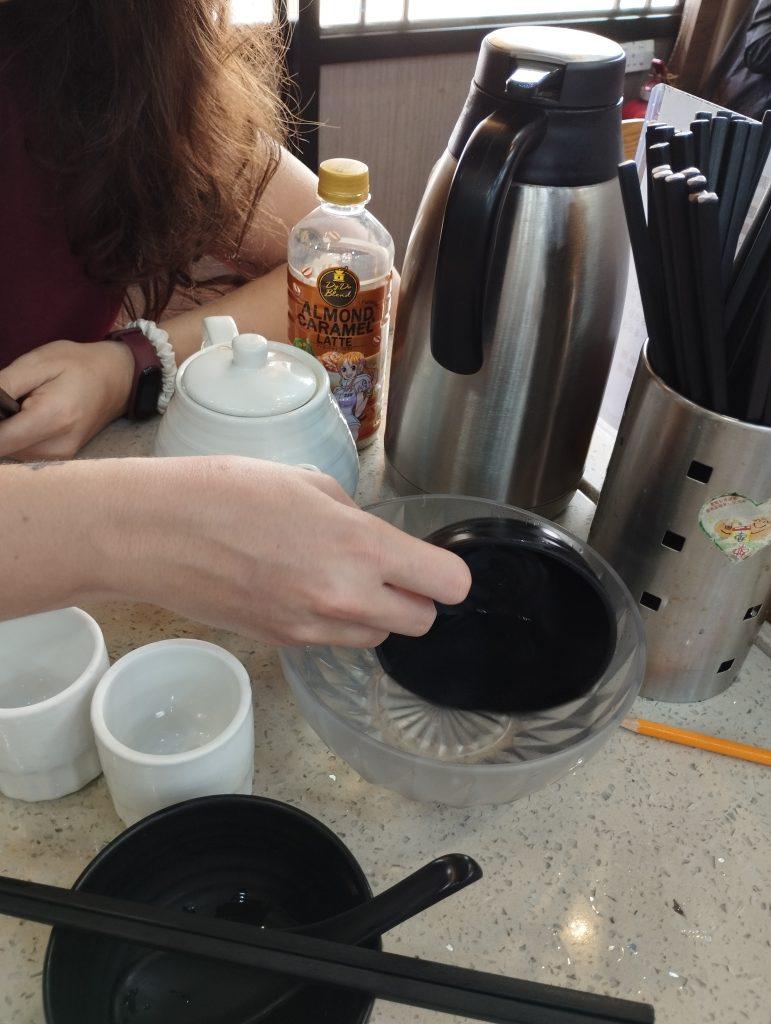
12. The street markets, which have little to do with those of Southeast Asia
The term “street market” takes me directly to Thailand, Malaysia, Vietnam, and other countries in Southeast Asia. Although more and more street markets are turning to low-quality goods and souvenirs, with little room for local crafts, there are still countries where these markets are a party: concerts, gastronomic offer, games for children…
In Hong Kong, however, most street markets have become stalls selling items and offering nothing else, which disappointed me in a way. So, something that in other countries is in itself one of the things that you cannot miss on your travels, in Hong Kong is not the best. Sorry, not sorry.
13. Breakfast for the intrepid
In general, whether it is in a cha chaan teng – teahouse – or a dim sum restaurant, those who idolize breakfast and choose it as their favourite meal of the day will have a lot to enjoy in Hong Kong. Nutritious, varied, complete, and inexpensive, Hong Kong breakfasts are designed to get you through the day. The breakfast set consists of a hot dish (the most common are beef satay or macaroni and broth, ham and cheese), a plate of eggs (either fried or scrambled), a slice of bread, brioche or a sandwich, coffee or tea.
If you opt for the other typical breakfast and decide to eat dim sum in Hong Kong, you will not be short of options: steamed, grilled, fried, with rice… Dim sum dishes are endless, and in local restaurants specializing in this food, it is also common to find offers with closed and full menus. You won’t need more, and you will love breakfast in Hong Kong!
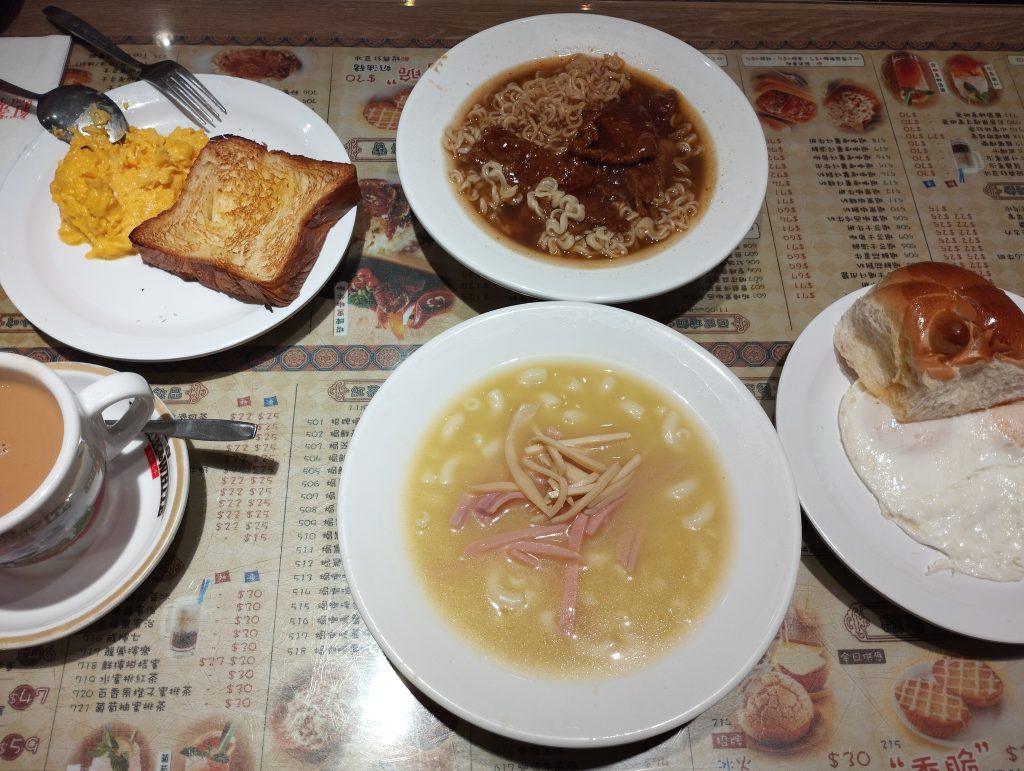
14. You will see people smoking in some bars
Although there is a law that says otherwise, it is not surprising that if you go to some bars, especially pool and darts places, you see people – especially groups of men – smoking cigarettes. Indeed, they are very well ventilated, but still, I warn you not to be surprised, as I was when I saw it – too many years without smoke in bars, it still shocks me.
15. People ignore ambulances, but they pay attention to traffic lights
It sounds like a joke, but all the hustle and bustle that Hong Kongers usually have comes to a halt when a traffic light is involved. The first thing that comes to mind is that it is forbidden, and indeed, crossing a street when there is a traffic light indicating you to stop is an offense punishable by a fine of up to HK$2,000.
Are there people crossing anyway? Definitely, you can see some people, but what strikes me most is the irony that they follow the rules by the book for some things, but in the case of the ambulance I mentioned earlier, they don’t even flinch…
